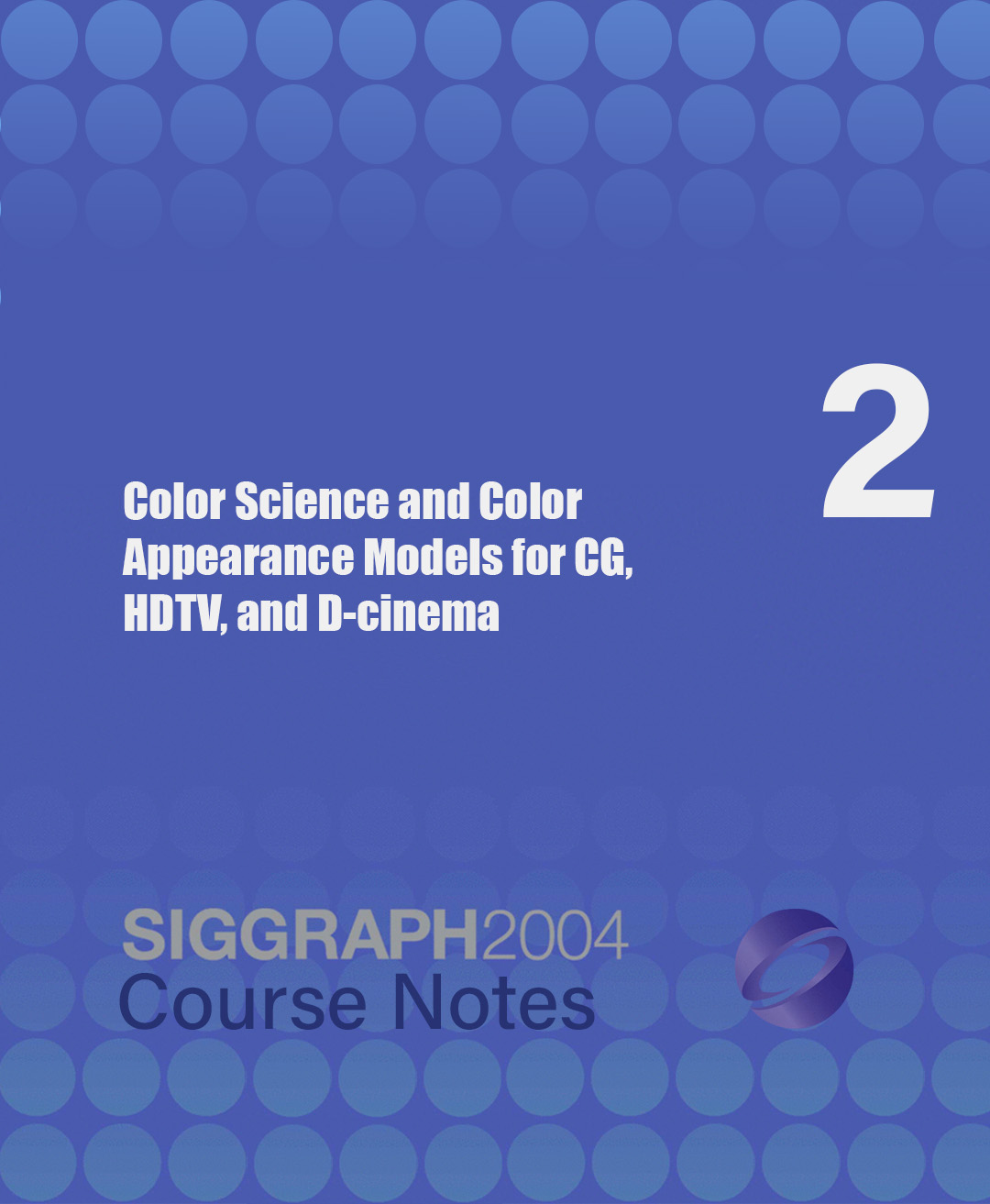“Color Science and Color Appearance Models for CG, HDTV, and D-cinema” by Poynton and Johnson
Conference:
Type(s):
Title:
- Color Science and Color Appearance Models for CG, HDTV, and D-cinema
Organizer(s):
Presenter(s)/Author(s):
Entry Number: 02
Abstract:
Prerequisites
Some familiarity with color image coding, perhaps gained through attending a color course at a previous SIGGRAPH conference. Attendees should have no fear of mathematics and be experienced in creating or manipulating digital images in CG and/or video.
Intended Audience
Scientists; programmers; visual effects and post-production supervisors; compositors; digital imaging technicians; video, HDTV, and digital cinema engineers.
Description
This course introduces the science behind image digitization, tone reproduction, and color reproduction in computer generated-imagery (CGI), HDTV, and digital cinema (D-cinema). It summarizes how color is represented and processed as images are transferred between these domains and details the different forms of nonlinear coding (“gamma”) used in CGI, HDTV, and D-cinema. It explains why one systemÕs RGB does not necessarily match the RGB of another system and reviews color specification systems such as CIE XYZ, L*a*b*, L*u*v*, HLS, HSB, and HVC. It describes why coding for color image data has a different set of constraints from color specification, and summarizes color image-coding systems such as RGB, R’G’B’, CMY, Y’CBCR, and DPX/Cineon. The course also reviews color measurement instruments such as densitometers and colorimeters, and explains monitor calibration, how color management technology works, and how it is currently being used in motion picture film production (both animation and live action).
Reproducing the tristimulus numbers of classical color science only reproduces colors accurately in an identical viewing environment. If the viewing situation changes, color is not completely described by numbers. In applying color science to image reproduction, the goal is to reproduce images in environments where angular subtense, background, surround, and ambient illumination may differ from the conditions at image origination. Recent advances in color appearance modeling allow quantification of the alterations necessary to reproduce color appearance in different conditions. This course introduces the theory and standards of color appearance models, and describes application of color science and color appearance models to commercial motion imaging in computer graphics, video, HDTV, and D-cinema.





